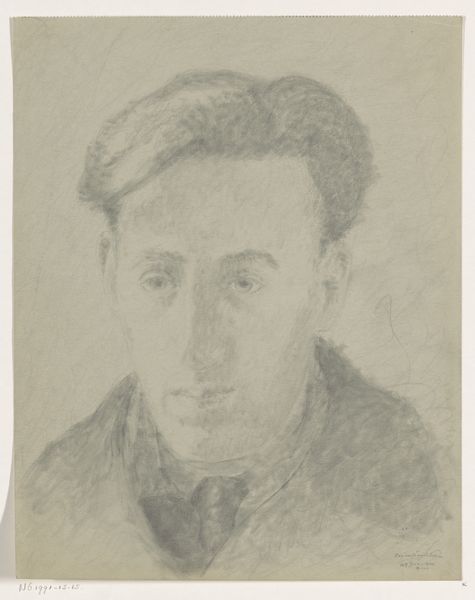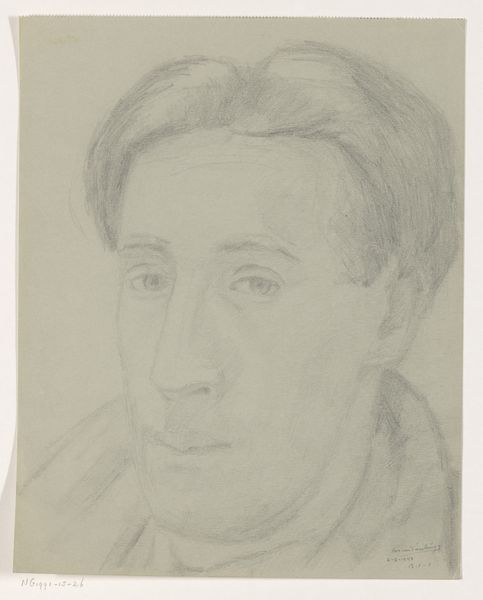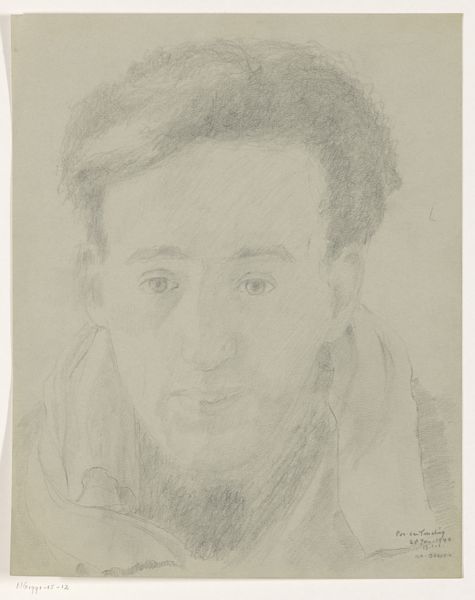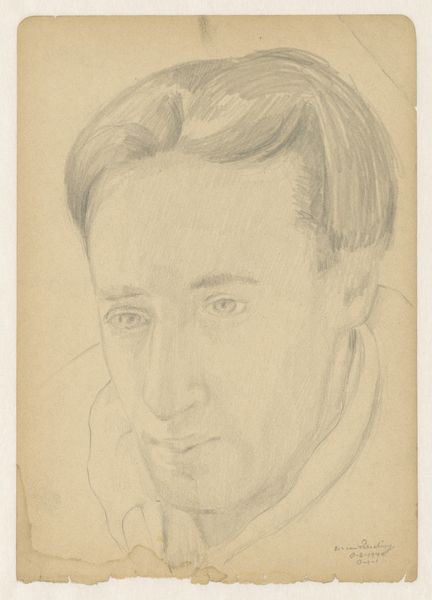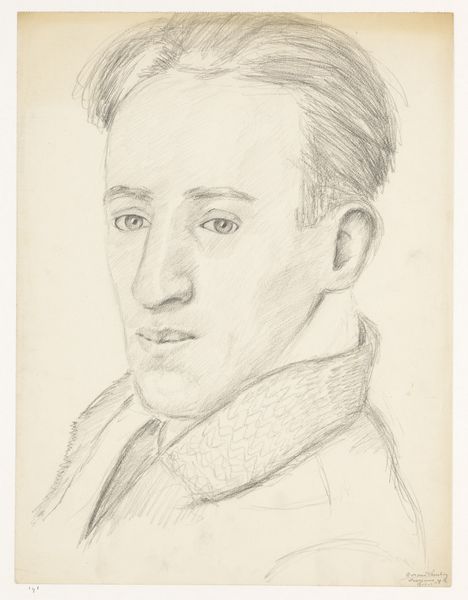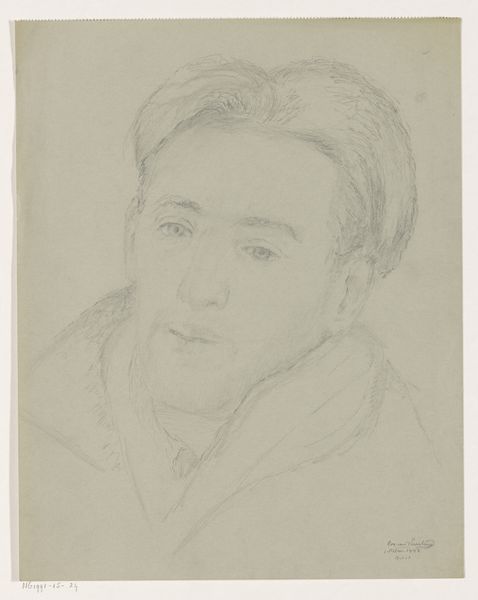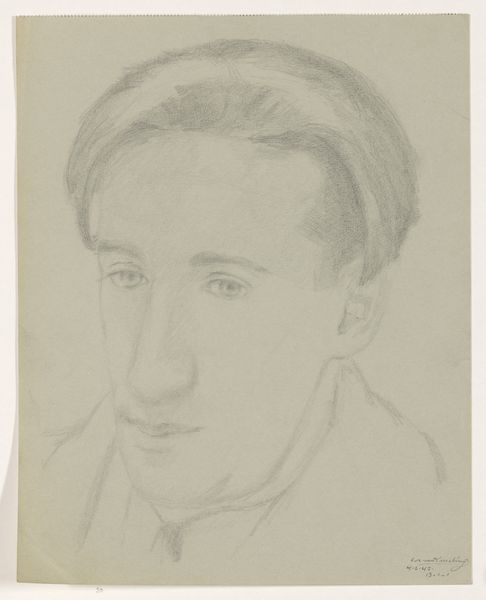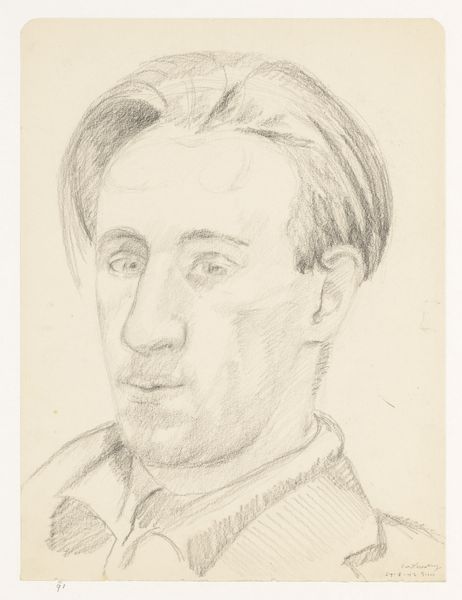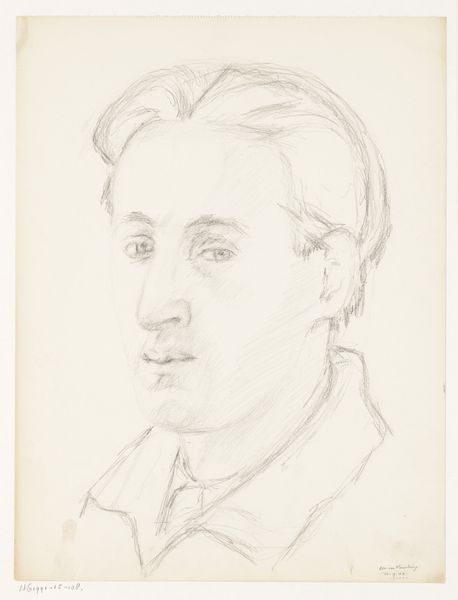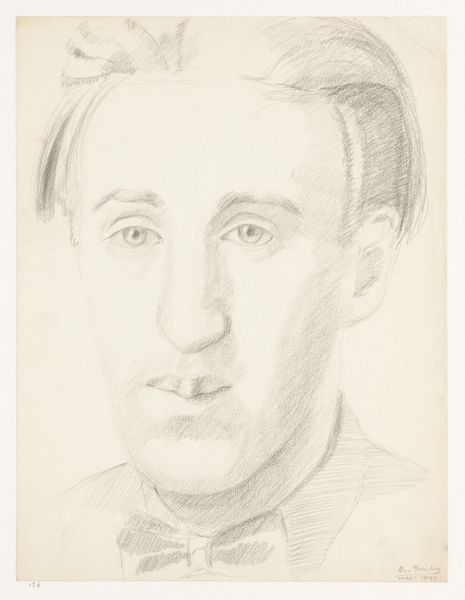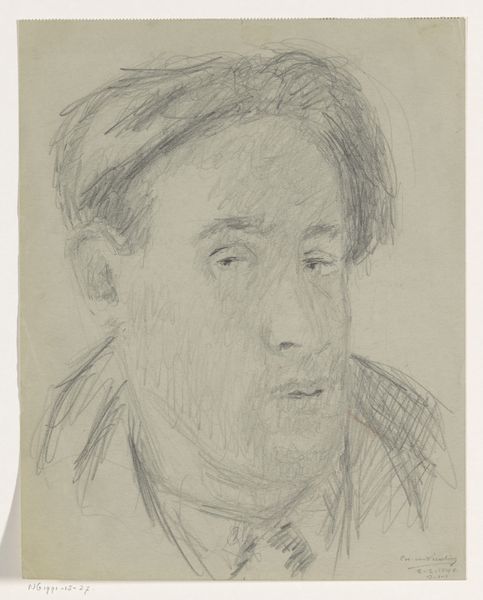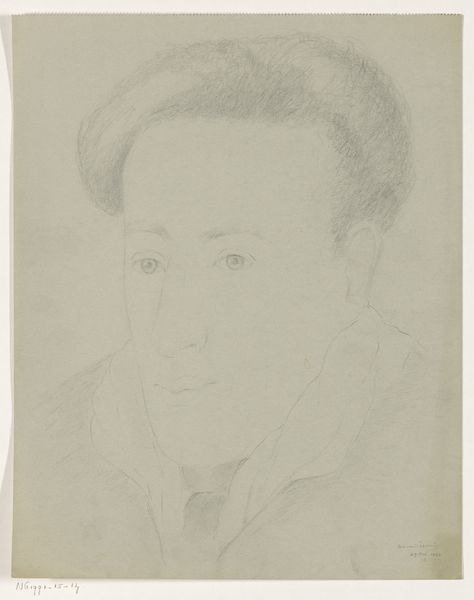
drawing, pencil
#
portrait
#
pencil drawn
#
drawing
#
amateur sketch
#
toned paper
#
facial expression drawing
#
light pencil work
#
self-portrait
#
pencil sketch
#
portrait reference
#
pencil drawing
#
pencil
#
portrait drawing
#
pencil work
#
modernism
#
realism
Dimensions: height 30.5 cm, width 24.5 cm
Copyright: Rijks Museum: Open Domain
Curator: We are looking at a pencil drawing on toned paper by Cor van Teeseling, a self-portrait entitled "Zelfportret: B-1-1, 30 Januari", likely created in 1942. It's currently held here at the Rijksmuseum. Editor: There’s a quiet intimacy to this sketch. The light pencil work gives a gentle quality, but also a kind of fragility. He captures a certain melancholic mood, doesn’t he? Curator: Indeed. It's tempting to overlay our knowledge of the period onto the work – 1942 in occupied Holland – and to view it through that lens. Van Teeseling was a complex figure within the artistic landscape of the time, navigating difficult circumstances, so such a lens does yield important interpretive potential. Editor: The downward gaze, the soft shading around the eyes… It evokes a sense of introspection, perhaps even anxiety. Do you feel that the seemingly amateur style contributes to that emotional authenticity? Curator: That's interesting. I think it perhaps deflects any potential reading of arrogance which one might attach to the artistic practice of self-portraiture. Also, there is an element of uncertainty, given the likely circumstances. But perhaps a trained iconographer will find symbols and allusions in the visual texture which the lay person would easily miss. Editor: What strikes me is the stark simplicity; just the artist, a pencil, and paper. The medium feels crucial. Pencil sketches, often studies, allow artists a direct, unvarnished representation. Van Teeseling, in choosing this form for his self-representation, highlights, as you say, his vulnerabilities, his anxieties, and perhaps something essential to human nature. It really speaks to the individual amidst a world falling apart. Curator: It is certainly tempting to see the individual versus the encroaching horror of World War Two represented in it, and to imagine it as the assertion of a distinct personal identity, perhaps even coded with a hidden defiance through symbols which the casual onlooker would not detect, given that such imagery could carry emotional and cultural weight far exceeding a simple description. Editor: It seems to ask us to consider the weight of self-reflection during uncertain times. It’s a powerful reminder of the silent struggles and private contemplations happening throughout history, often unseen and unrecorded. Curator: It allows us to reflect upon the social history of art, too, since works like these may very easily fail to achieve due prominence in public gallery space. A wonderful object to have been given a chance to think more about, thank you.
Comments
No comments
Be the first to comment and join the conversation on the ultimate creative platform.
